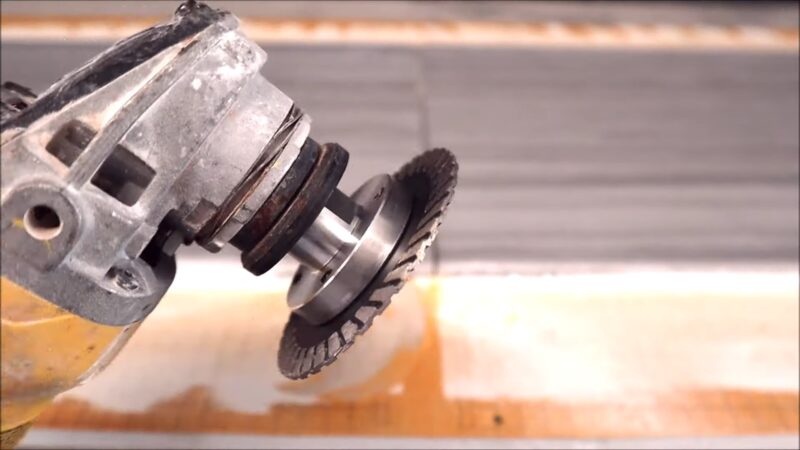Small disc grinders play an indispensable role for repair contractors engaged in masonry repointing tasks. These electric-powered right-angle grinders efficiently and swiftly remove hardened mortar. While some caution against using grinders on historic masonry due to potential damage, others argue that grinders can be employed under specific circumstances. While softer lime mortar in older buildings can be removed using hand chisels, the tougher mortar in modern structures often necessitates the power of a grinder.
The most popular disc grinders for masonry come with cutting wheels of 4, 4 1/2, or 5 inches. These grinders are equipped with a compact electric motor. Typically priced under $150, small disc grinders are often considered disposable tools.
However, even with a projected lifespan of six months, some minimal maintenance is necessary.

For repointing applications, diamond cutting wheels are generally recommended, although they tend to be more expensive than regular grinder blades. Manufacturers acknowledge that tuck pointers usually opt for lower-priced blades and replace them when signs of wear become apparent.
When using small disc grinders extensively, slight variations in power output, tool weight, and other features can significantly impact productivity and safety. Moreover, increased awareness regarding the hazards of silicosis has prompted OSHA to place special emphasis on preventing this severe respiratory disease. Tuck pointers should wear a respirator or employ a dust-collection system when grinding mortar joints. However, many dust-collection devices attached to small grinders obstruct the user’s line of sight, posing risks to safety and work quality.

In addition to price, it is essential to consider other features. A higher amp rating in a tool reduces the effort required by the user. Tool weight is another crucial factor; a heavier model may cause fatigue, while a lighter one may be harder to control, leading to excessive pressure on the blade. Dust-collection devices can add weight to the tool, affecting maneuverability.
Several features of a disc grinder influence user safety and tool durability. Look for double insulation, which eliminates the need for a grounded power cord and power supply system. A “soft start” feature reduces stress resulting from high-torque starts, while overload protection is also desirable.
Metabo’s small angle grinders boast an automatic safety clutch designed to safeguard both the user and the motor. The motor engineering sets Metabo grinders apart from other brands, justifying their higher price. Additionally, Metabo grinders include a fan attachment that prevents foreign matter from reaching the armature’s front.
Given the inherent dirtiness and demanding nature of repointing, ease of maintenance is a crucial consideration when selecting a grinder. Choose a tool that can be quickly opened and closed, and consider one that allows direct access to the motor’s carbon brushes, which require periodic replacement.
Tuckpointers should opt for segmental rim diamond blades rather than continuous rim blades to minimize dust generation.
While price often governs the choice of a diamond blade, tuck pointers should recognize that if the grinder is used for several hours daily, investing in higher-quality blades may lower the cost per cut.
When purchasing a diamond blade, it is important to know the compressive strength of the material to be cut and the hardness of the aggregate. Always carefully review the packaging for appropriate applications and specifications.

The silica dust produced when grinding out mortar joints poses significant health risks to workers. “Silicosis is a disabling, irreversible, and sometimes fatal lung disease caused by breathing respirable crystalline silica.”
Therefore, when using an angle grinder for repointing, wearing a respirator or employing a dust-collection system is essential. OSHA is moving towards mandating the use of dust-collection systems, but many currently available devices for small grinders are cumbersome and obstruct the operator’s view of the cutting blade and work surface. Consequently, most tuck pointers choose not to use them.
Besides concerns regarding dust generation, several other safety issues arise when using a disc grinder, as it is an electrically powered tool with a rapidly spinning blade. The instruction manual contains general safety guidelines for power tool use, as well as specific safety guidelines for the particular grinder model.
Adhering to basic maintenance practices is necessary for ensuring that the tool lasts beyond a few months.
Although small angle grinders may be simple and relatively inexpensive tools, they need not be discarded prematurely. – –







